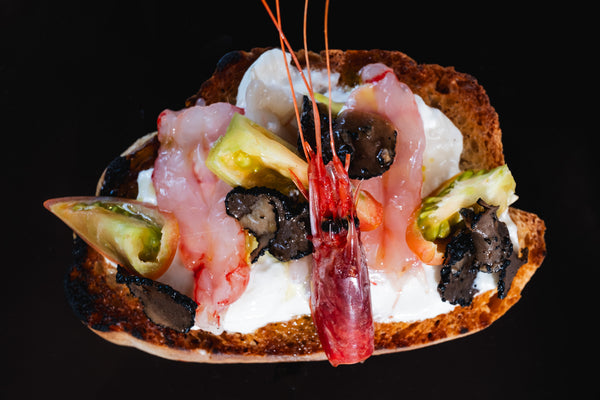In short, you can find truffles all around the world. But if you want to unearth (pun intended) the answer, we must first understand how truffles grow. If you already know, feel free to skip this article we wrote for you here and continue down the page.
The World’s Best Truffles
While there is a healthy debate as to where you can find the world’s best truffles – we’ll get to that shortly - let it be known that there are about 200 species of truffles all over the world, and so, the conversation of ‘where’ is more complicated to root out (alas, another pun).
Italy vs. France
The two most famous types of truffles are France’s Périgord black truffle (Tuber melanosporum) and Italy’s Alba white truffle (Tuber magnatum). And so, oftentimes, it is assumed that truffles come only from Italy and France, and even more granular –from specific places of Italy and France; most notably as the colloquial names would suggest, Périgord, France and Piedmont, Italy (Alba is a town in Piedmont).
As true as it may have been at one point in time, demand for truffles grew and so, efforts in cultivation increased. We can now find these species of Tuber magnatum and Tuber melanosporum all over countries like France, Italy, Spain, and even Australia. Look at the map below to see the areas we source our truffles:

Regions for the most renowned species:
As previously mentioned, there are a variety of different truffle species all over the world. At Sabatino, we focus on four species, listed below:
*for more precise truffle locations please reference the map above

BLACK WINTER TRUFFLE (Tuber Melanosporum)
- Harvest in parts of France: Aquitaine, Provence Alpes Cote D’Azur
- Harvested in parts of Italy: Umbria, Abruzzo
- Harvested in parts of Spain: Valencia, Aragon
- Harvested in parts of Australia: Perth, Tasmania

WHITE TRUFFLE (Tuber Magnatum)
- Harvested primarily all over Italy: Piedmont, Emilia-Romagna, Umbria

SUMMER TRUFFLE (Tuber Aestivum)
- Harvest in parts of France: Aquitaine, Provence Alpes Cote D’Azur
- Harvested in parts of Italy: Toscana, Campania
- Harvested in parts of Spain: Castile-Leon, Andalusia

BURGUNDY TRUFFLE (Tuber Uncinatum)
- Harvest in parts of France: Aquitaine, Provence Alpes Cote D’Azur
- Harvested in parts of Italy: Roma,
- Harvested in parts of Spain: Castile-Leon, Andalusia
Truffle Species from Other Parts of the World
Chinese truffles known as Tuber indicum closely resemble our renowned Tuber melanosporum (the black winter truffle). However, the flavor of Tuber indicum is very subtle and inferior to the taste of Tuber melanosporum.
Truffles have been found growing in various regions of the United States as well. As opposed to wild truffles occurring naturally, cultivating truffles domestically has become increasingly feasible. However, it is important to note that the only certain species that can be successfully cultivated. This process involves inoculating the spores onto the roots of specific trees, such as oaks or hazelnuts, and requires careful management of soil conditions to encourage the growth of these prized fungi.
Wild vs. Cultivated
The increasing demand for truffles paved the way to truffle cultivation. Before the 19th century, truffles sourced anywhere were entirely wild and unpredictable. At Sabatino, we have a network of truffle farmers who operate truffle plantations across Europe and Australia.
These truffle plantations, also known as Truffiere, occur naturally or through cultivation and comprise of large areas of land with host trees.
That being said, scientists were able to successfully inoculate trees with mycelial cultures producing Tuber aestivum, uncinatum, and melanosoporum; but the famous white truffle, Tuber magnatum, has yet to meet the same fate, holding its title as the rarest, most expensive truffle species.



